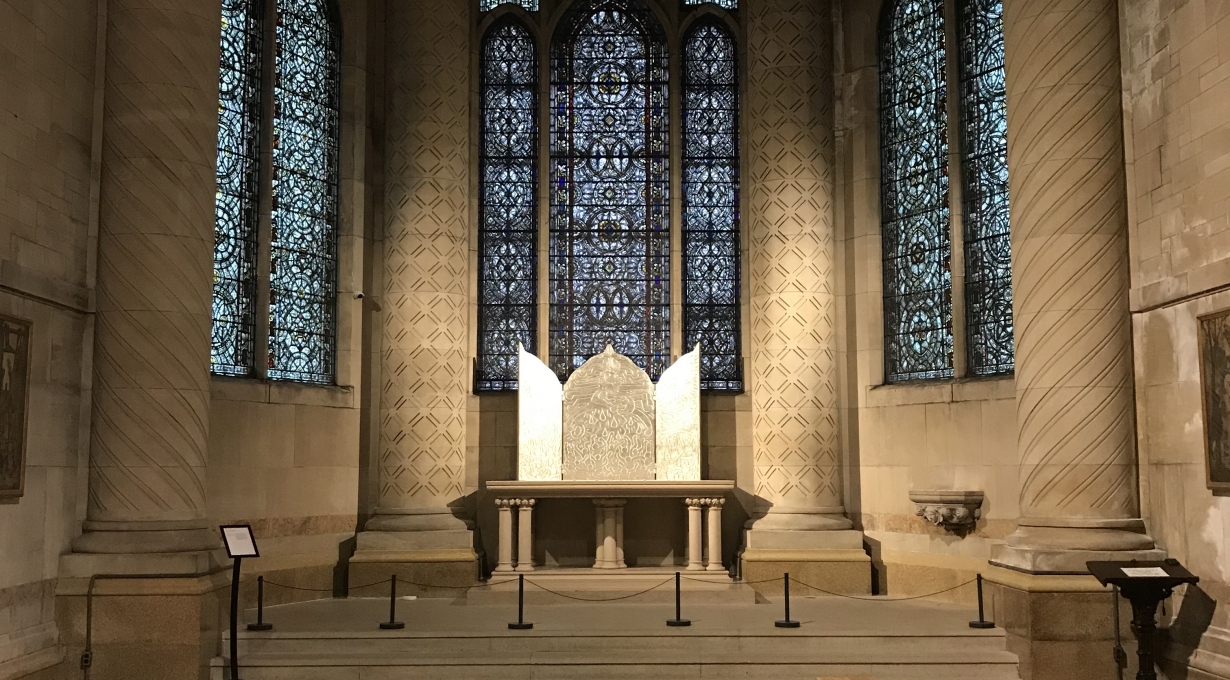Meet the Artists: Francis Cape

Francis Cape's Utopian Benches appear in the Value of Sanctuary: Building a House Without Walls, now on view in the Cathedral.
What were you thinking about when creating this piece of work? Had you spent any time considering the word “sanctuary”?
There is not a short answer to that question. One inspiration is the small town where I live and where neighbors do things for each other without regard to personal gain. In other words, they exhibit behavior that is motivated by values other than the materialist individualism that we are encouraged to live by. My neighbor on one side would cook three meals and walk one across the street to the old man living on his own. My neighbor on the other side would finish mowing their lawn and ride right across to mow that of the old folks on the other side. Then there’s the volunteer ambulance service, of which I am a member. There, it is a case of from each according to their abilities to each according to their need. It was Karl Marx who wrote that. In the nineteenth century intentional communities, such as the Shakers, were known as American communisms. They lived together sharing property in common. The project Utopian Benches is about sharing. A bench is a seat that we share; we sit at the same level.
I had not thought about sanctuary, but when the Cathedral proposed including Utopian Benches in The Value of Sanctuary it was obviously right. Many, if not most, of the nineteenth century Christian intentional communities who came to the United States came seeking sanctuary from persecution in Europe. Further thought has made me appreciate that these communities provide sanctuary for members from a world that can be hostile. The most obvious example is the Camphill Villages, represented here by a bench from the Kimberton Hills community in Pennsylvania. Camphill Villages provide a place where adults with disabilities can live full, active lives, contributing to the community according to their abilities and receiving according to their needs.
What does it mean to you and/or the piece of art to be shown in a place of worship?
The work benefits from being shown in a place of contemplation.
What were your first impressions of the Cathedral?
It’s big. I grew up with and love the English gothic cathedrals. St. John the Divine is not the same. I have yet to work out what is different beyond the obvious differences in stone handling.
What is your favorite unexpected place to view art?
I don’t know. Surprise me.
What artists or artworks are you inspired by?
Makonde Staffs, Medieval European Misericords, Rachel Whiteread, Andrea Zittel, Donald Judd, Duccio.
What is your Sanctuary?
My home